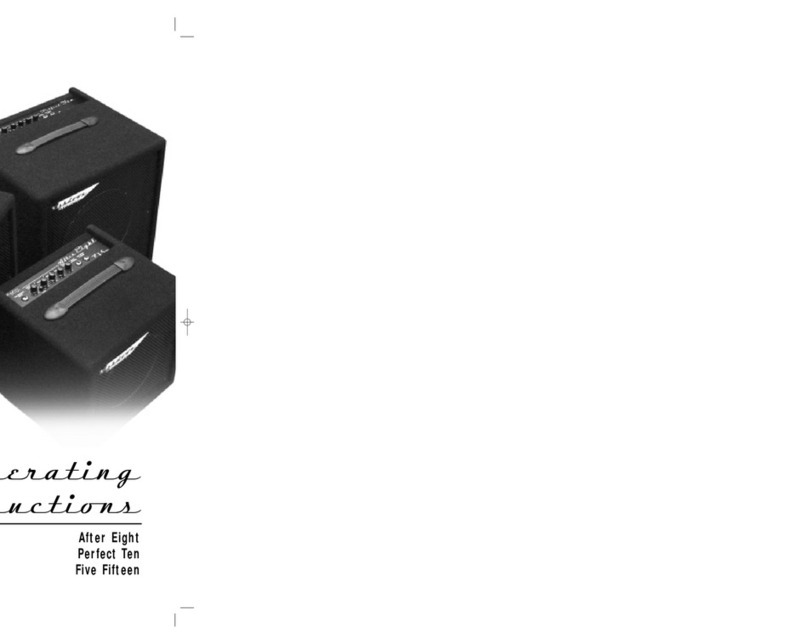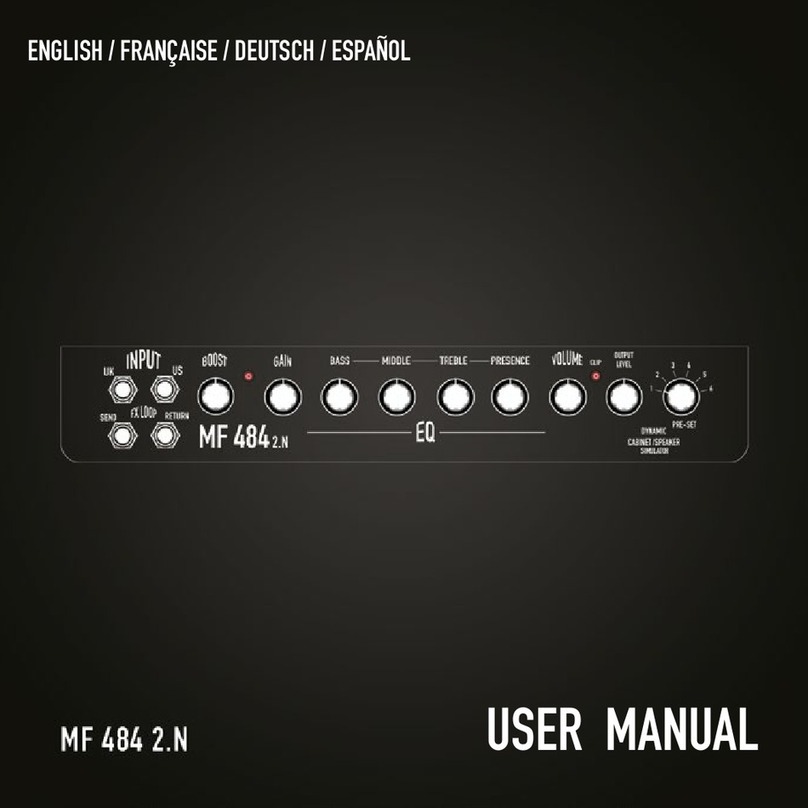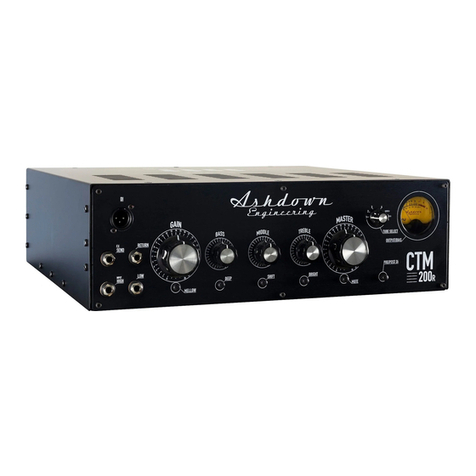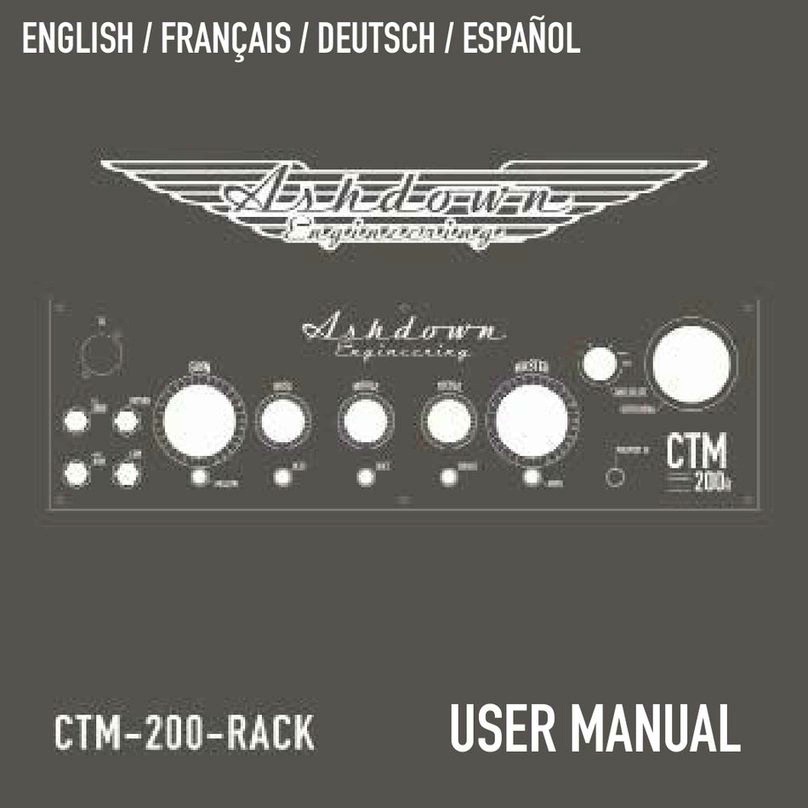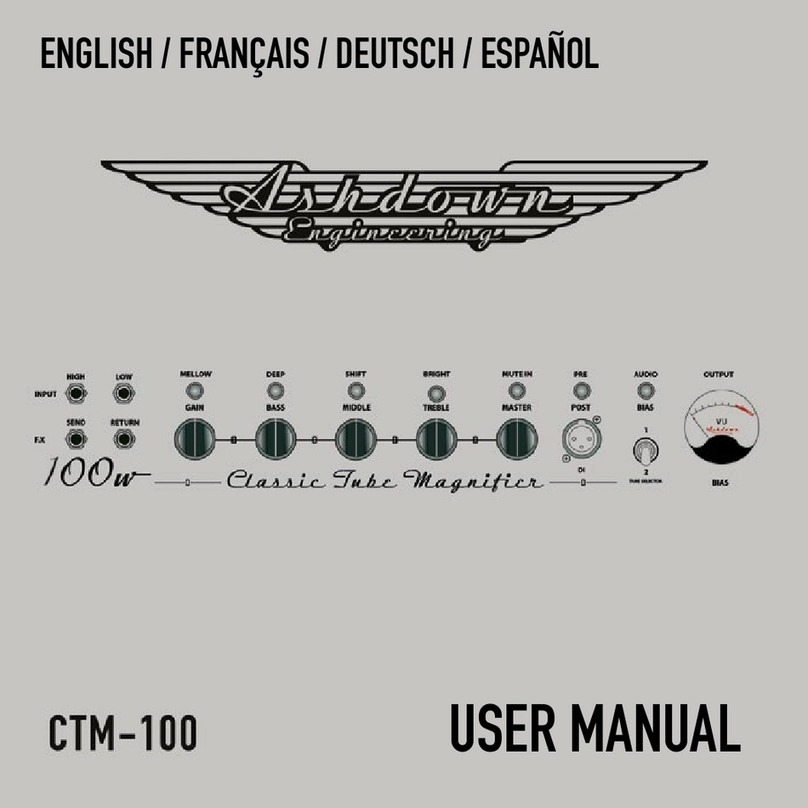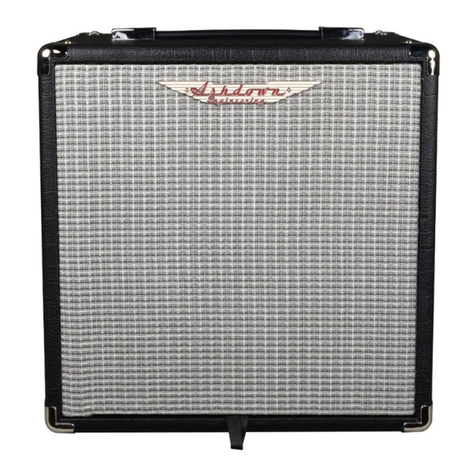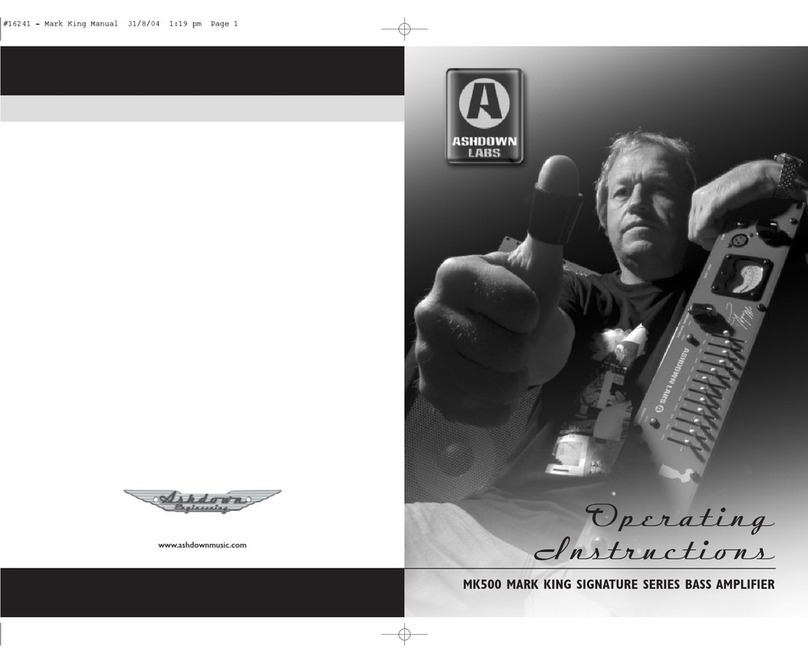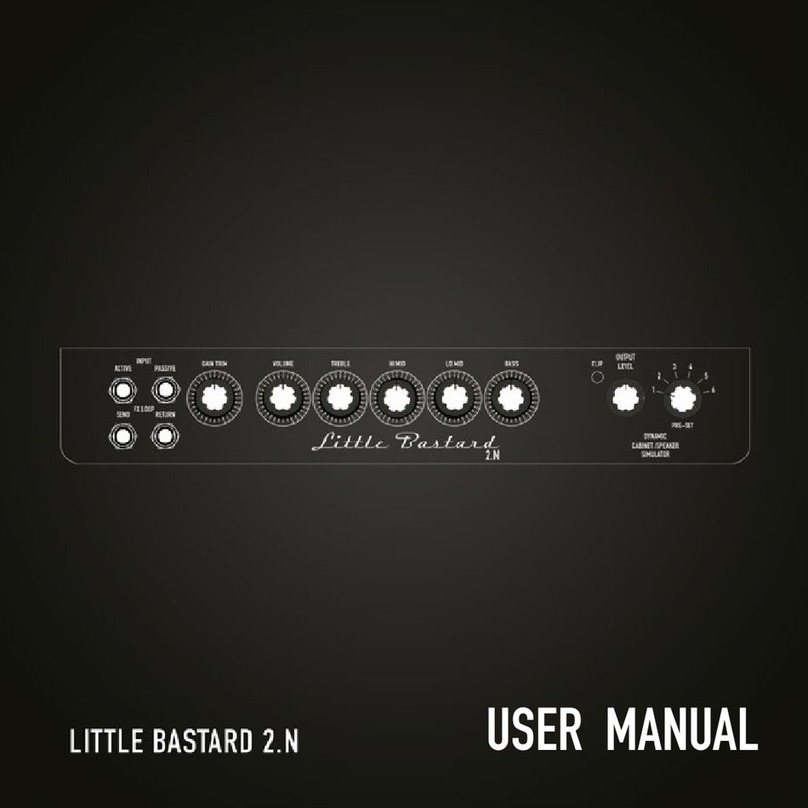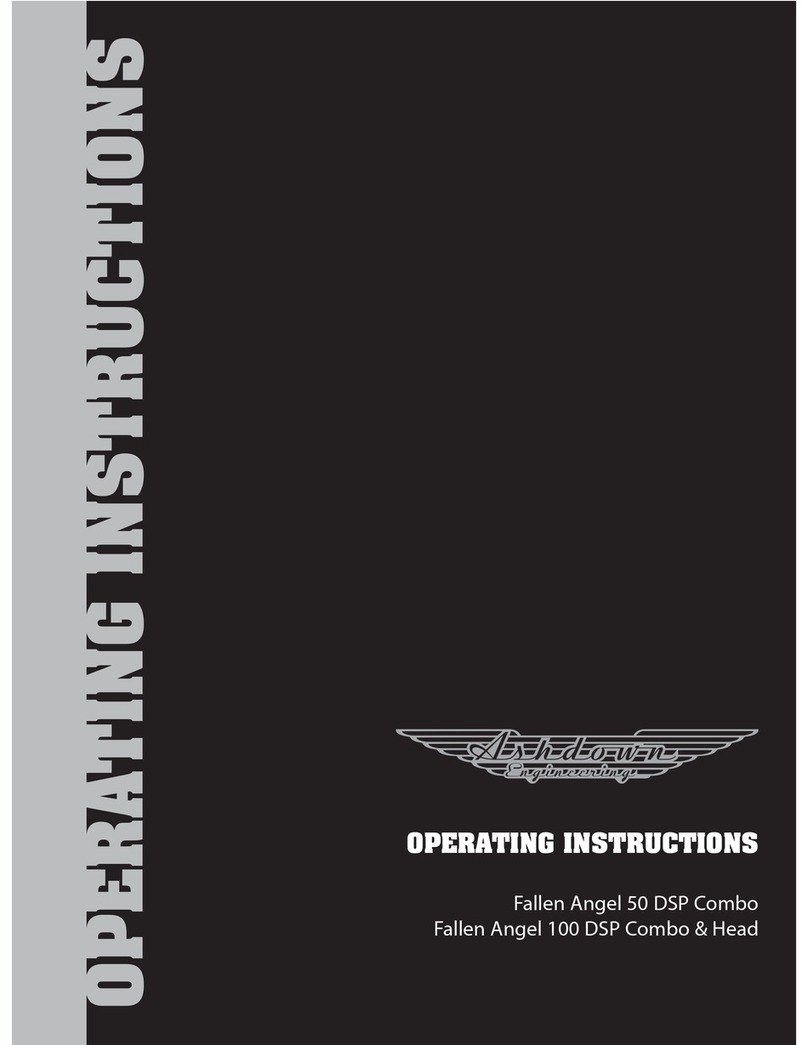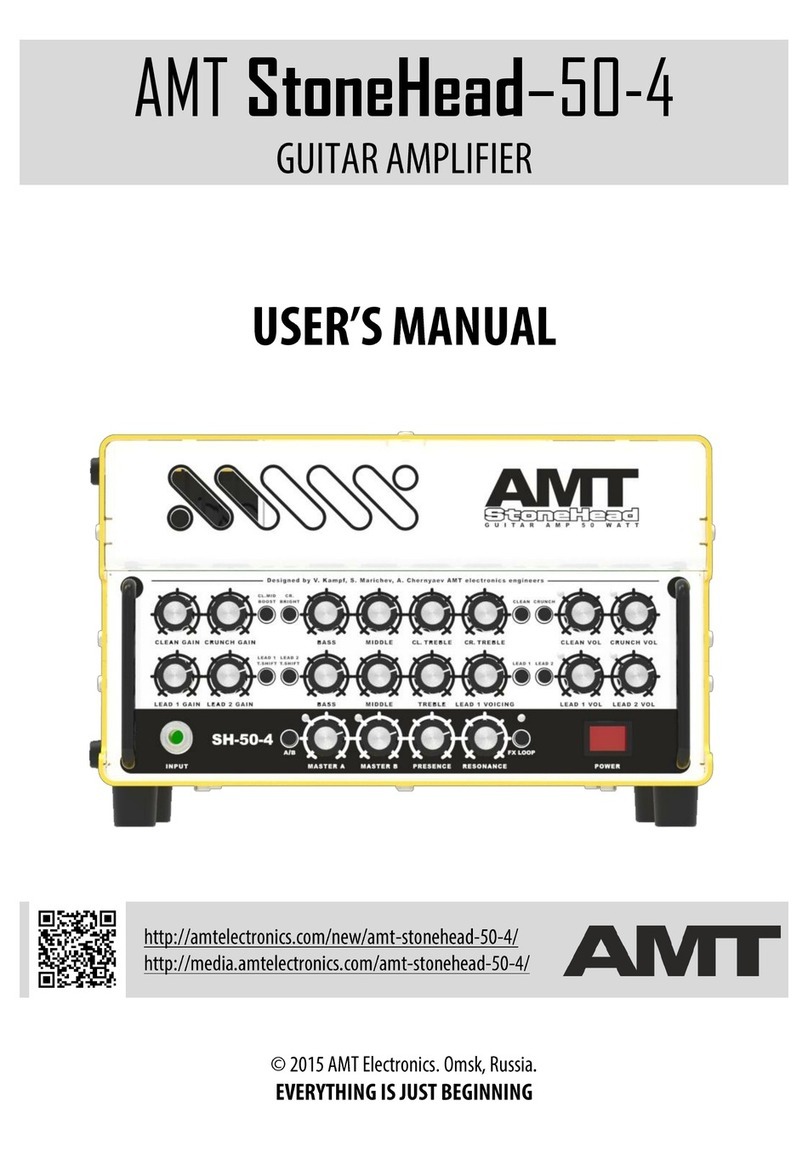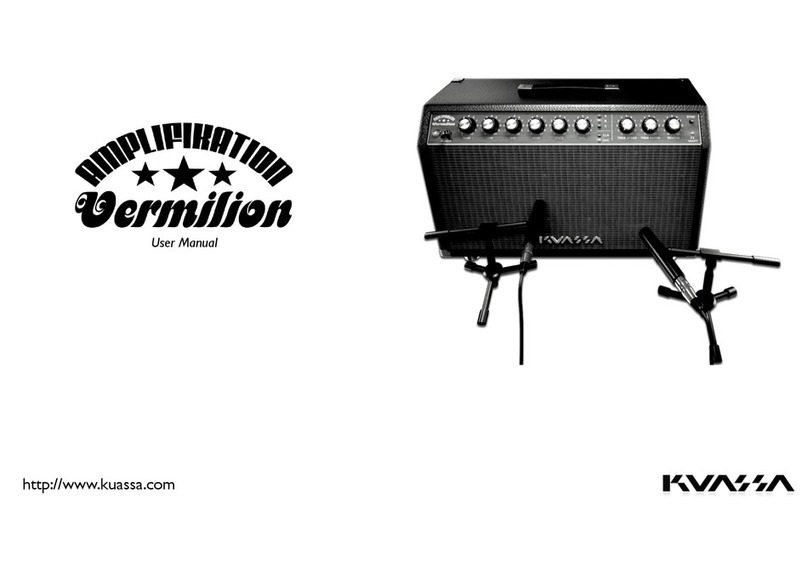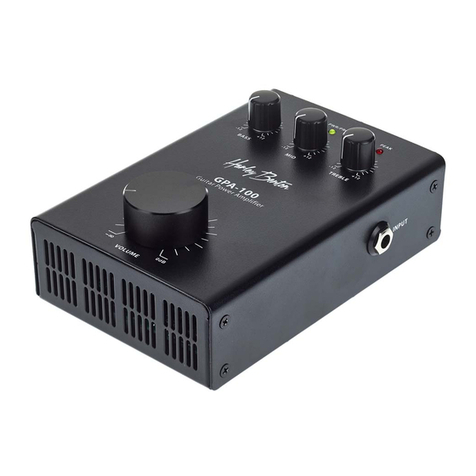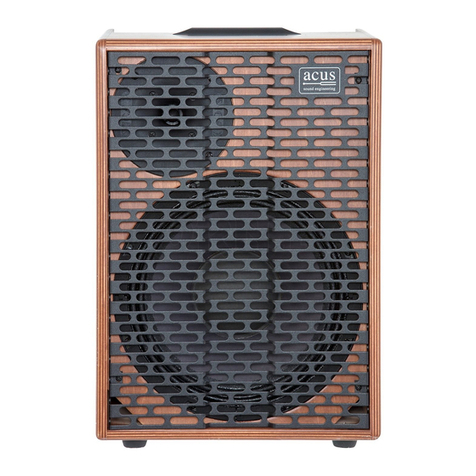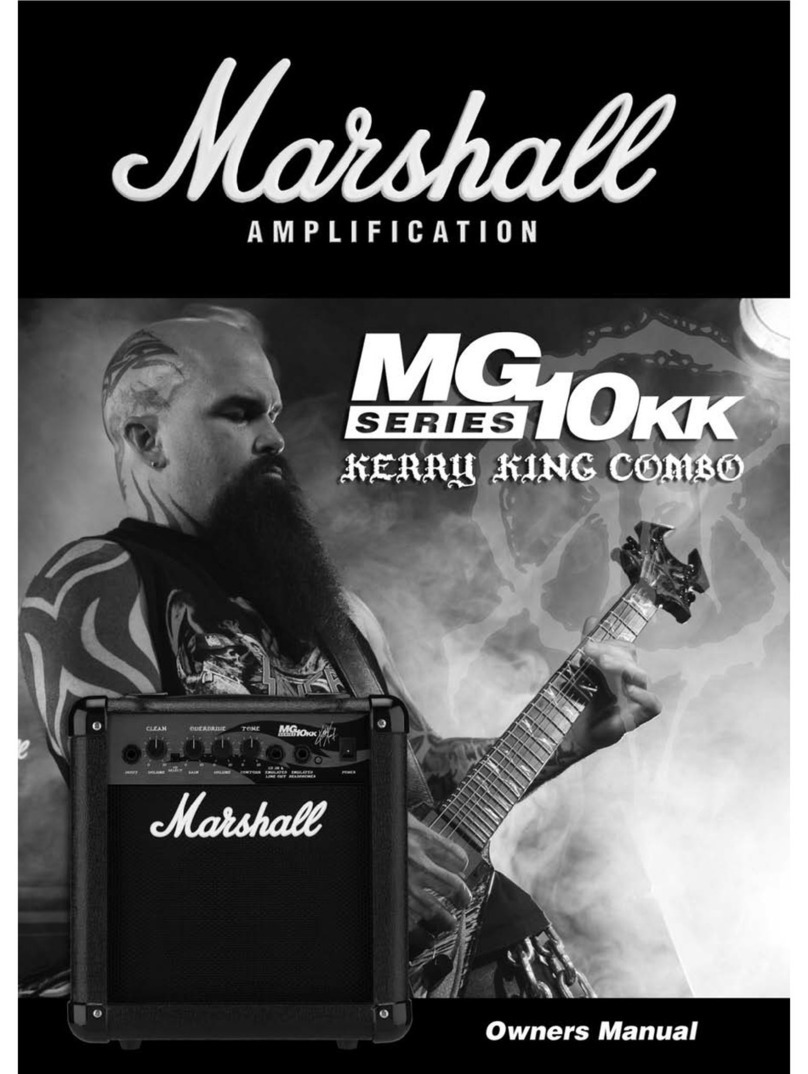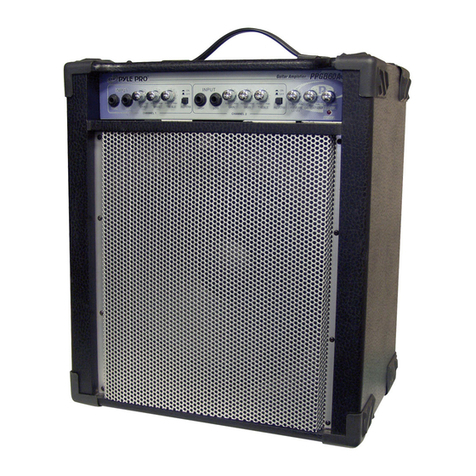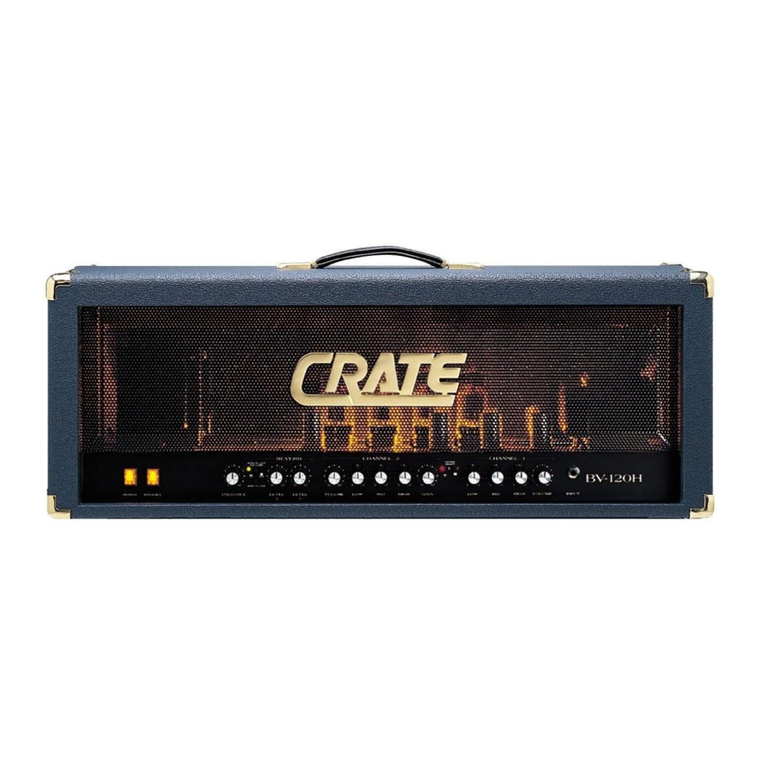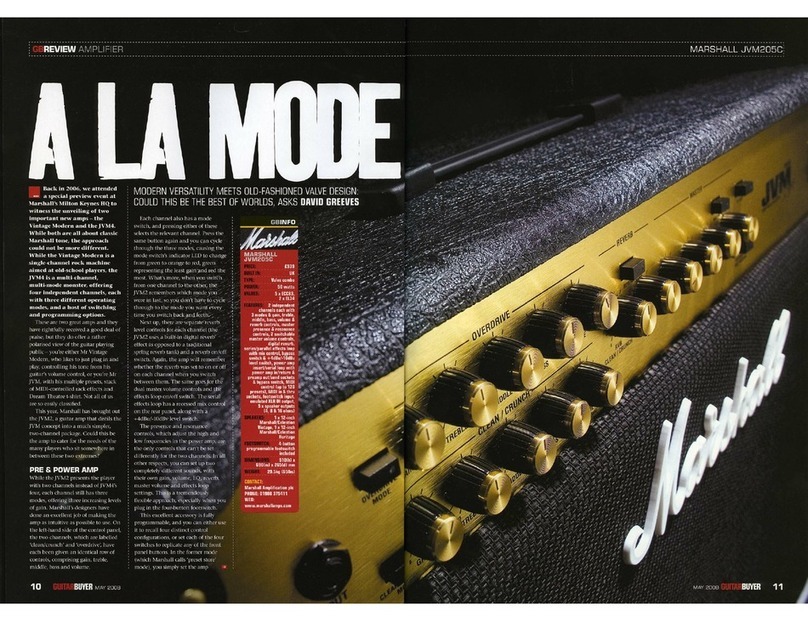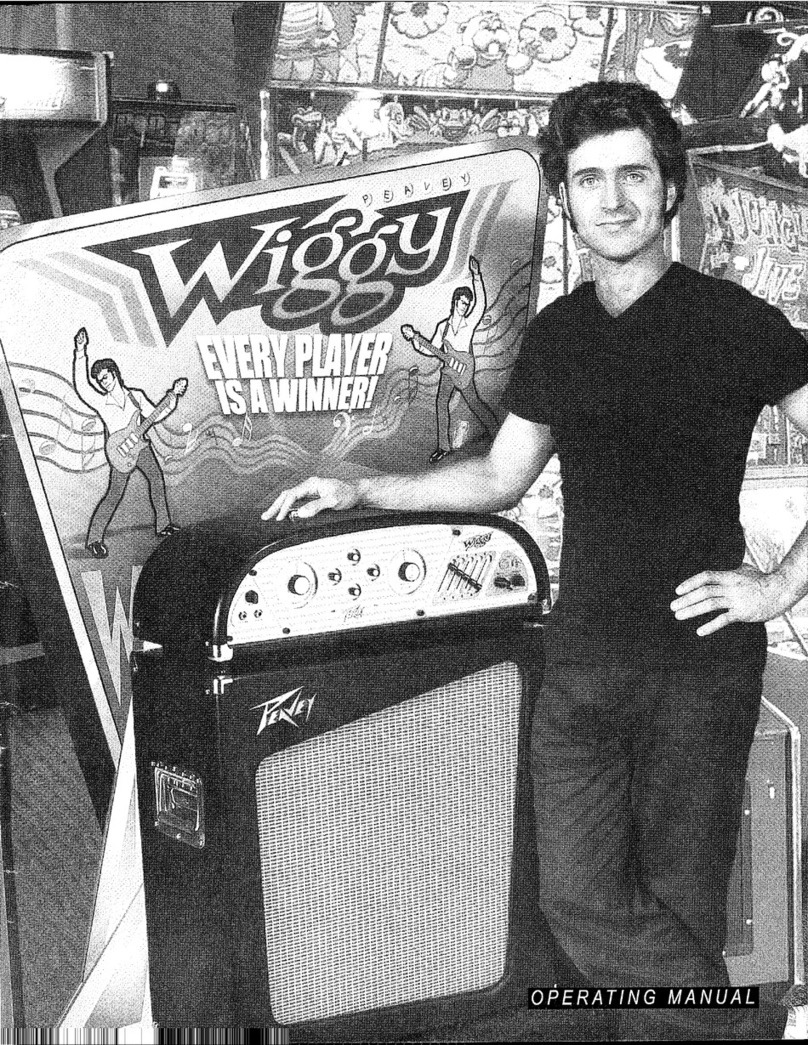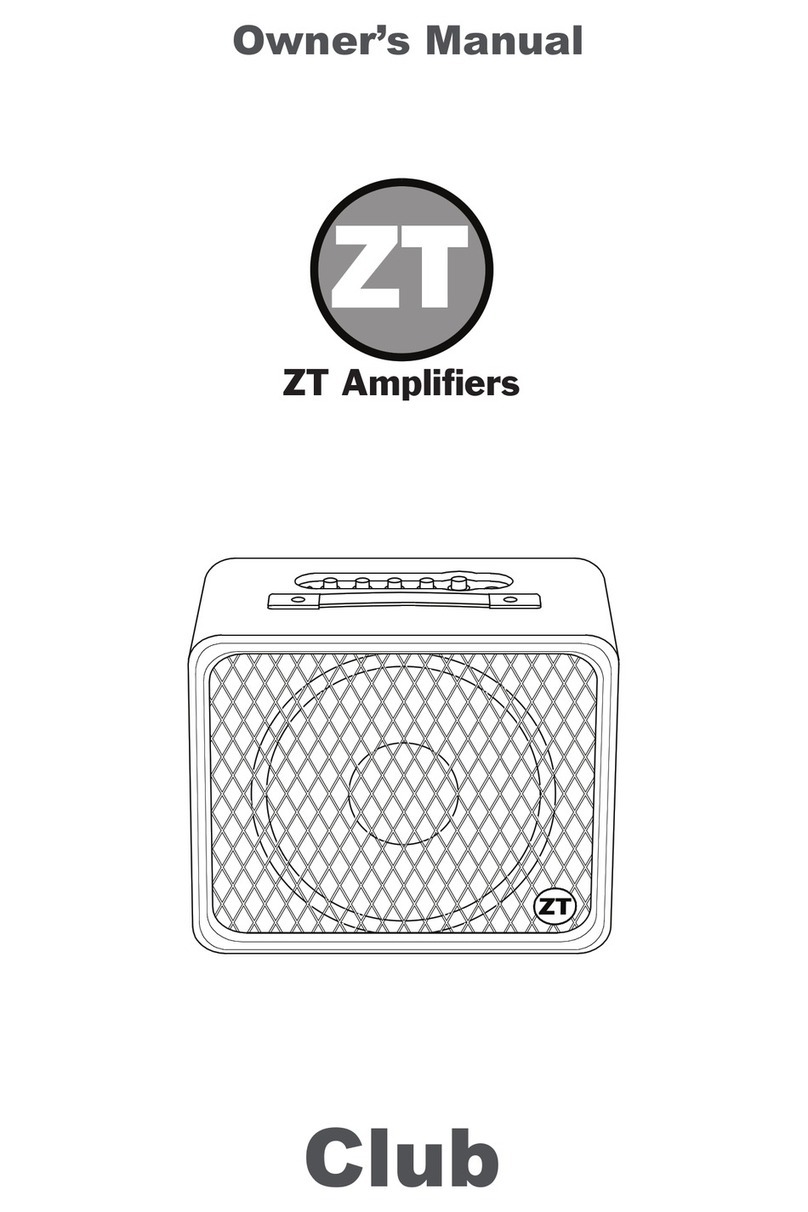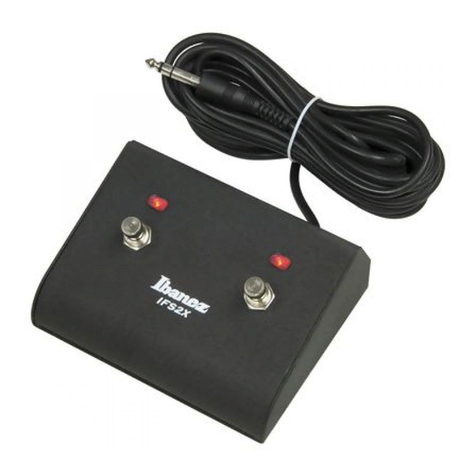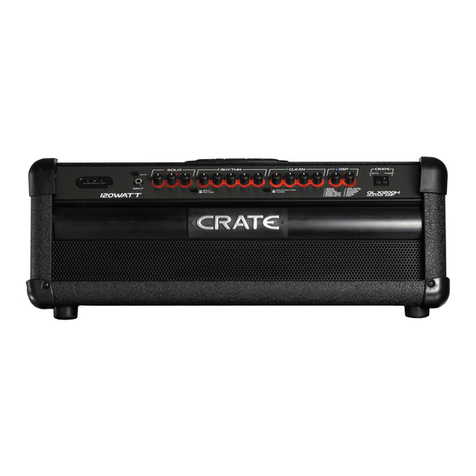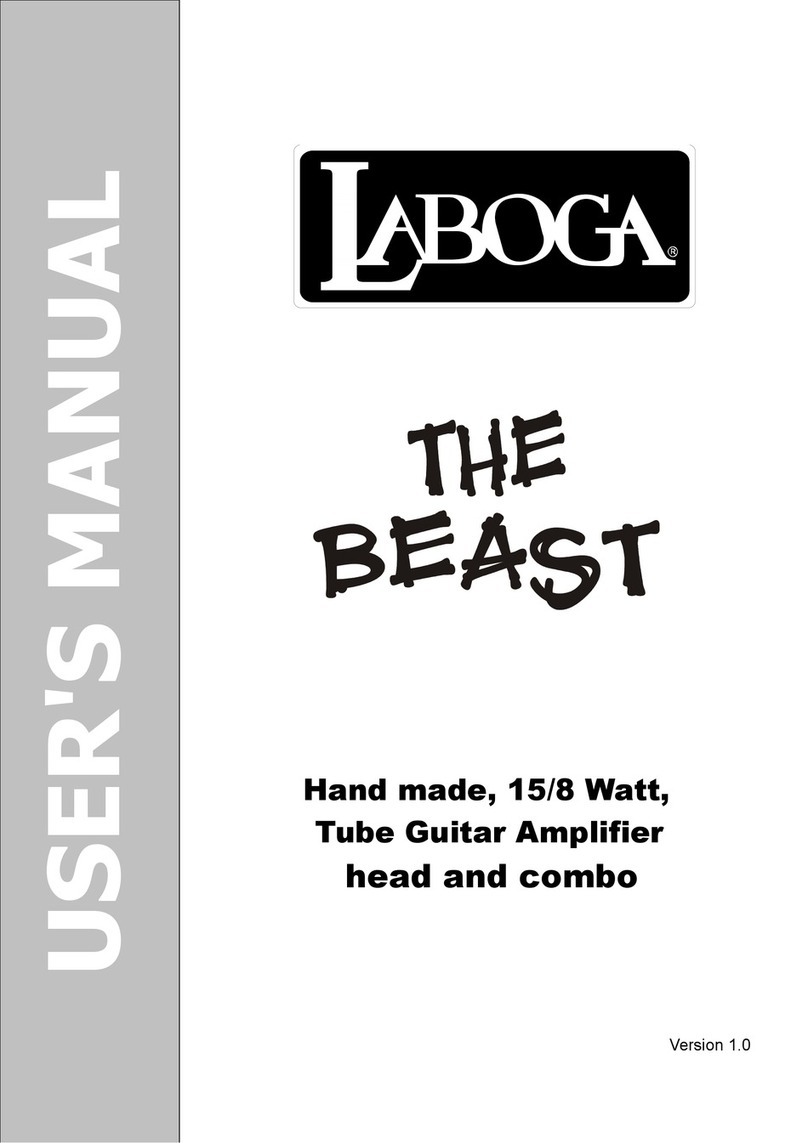
The compression level control adjusts the degree of compression applied
to the bass signal. For this to function correctly the input level must be
correctly set as described in the input control section above. When the
input level is correctly set there will be hardly any difference in volume
between compression in and compression out. This is because the
RM automatically compensates for the reduction in level that would be
apparent when compression is added by increasing the overall gain to
restore the volume to its pre compression level, because of this you may
notice an increase in background noise with high compression settings.
Compression is switched in/out with the push button adjacent to the
compression level control.
Overdrive
This is a valve/tube emulated overdrive that is variable from a slight ‘edge’
or ‘warmth’ through to a fairly aggressive overdrive/distortion effect. The
actual degree of overdrive applied to the bass signal is also dependent
on the setting of the input level control. The higher this is set, the greater
level of overdrive can be applied using the overdrives own rotary control.
Overdrive can be switched in with the push button above and to the
right of the overdrive rotary control. The amount of drive applied to the
overdrive circuit is adjusted using this rotary control. The over-driven bass
signal is applied in parallel with the dry bass signal to ensure you never
lose the full bottom end from your bass. Overdrive is situated after the
compression allowing for a sustained over-driven bass signal to be pro-
duced by adding a degree of compression along with the overdrive itself.
USER GUIDE
ROOTMASTER EVO II
